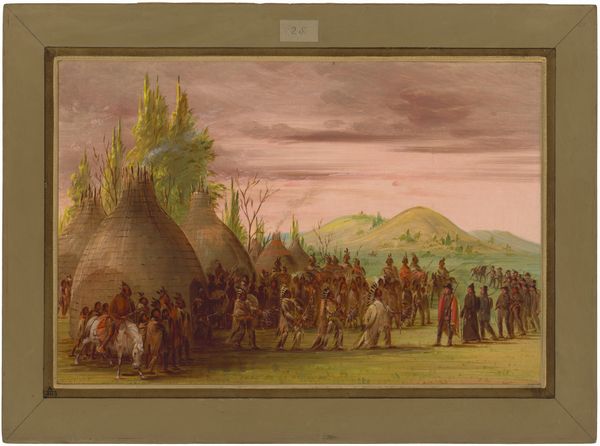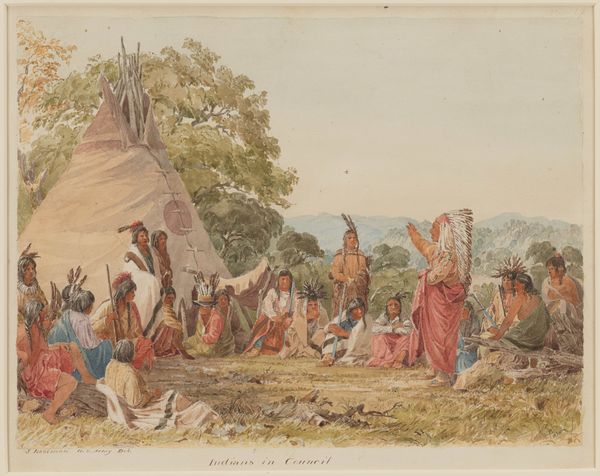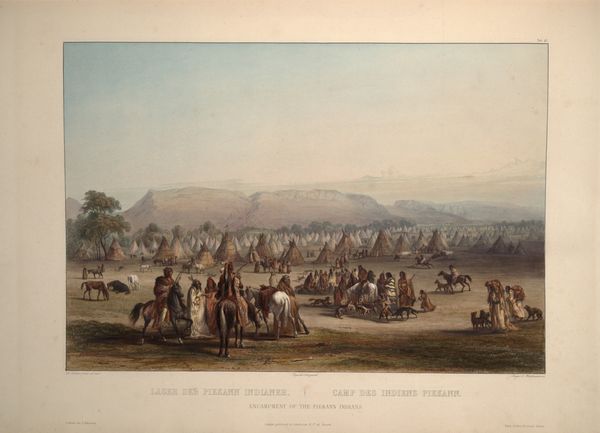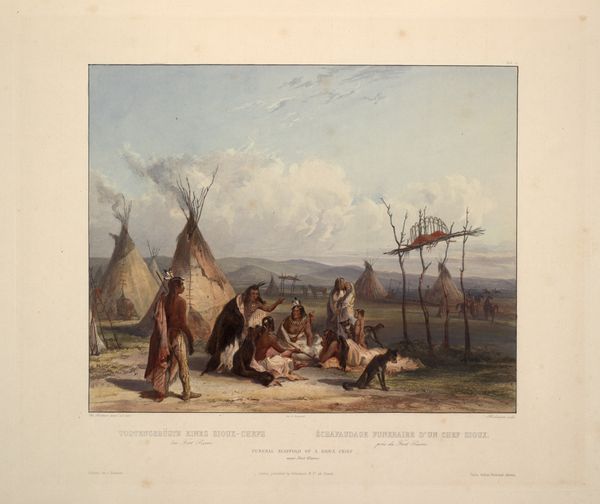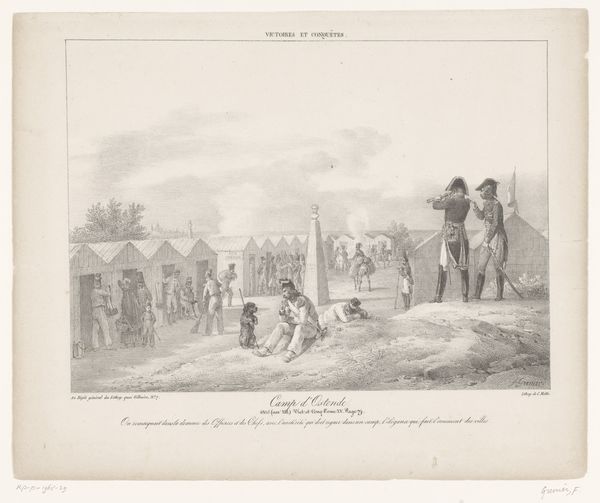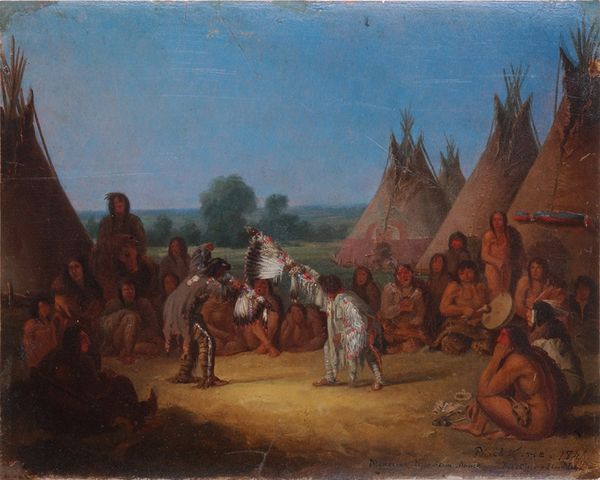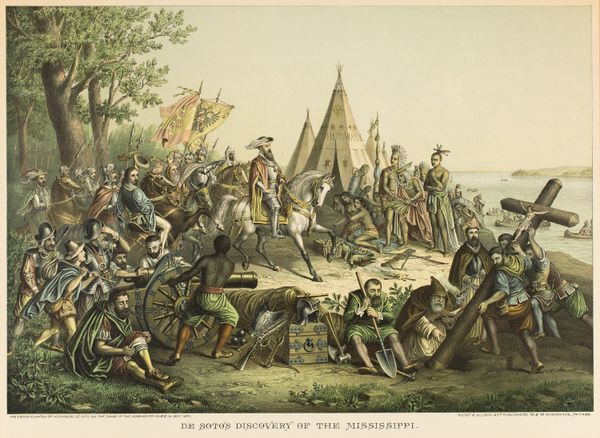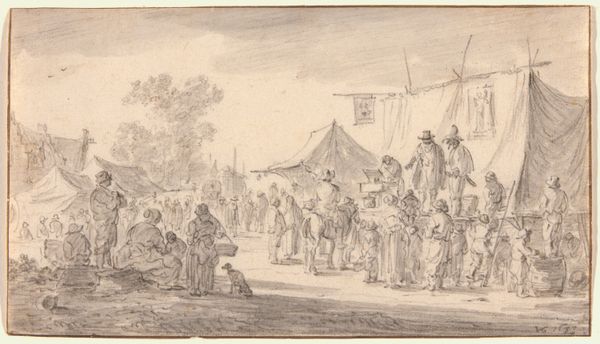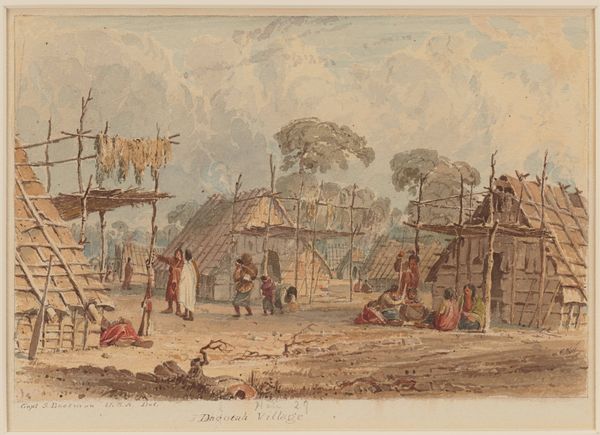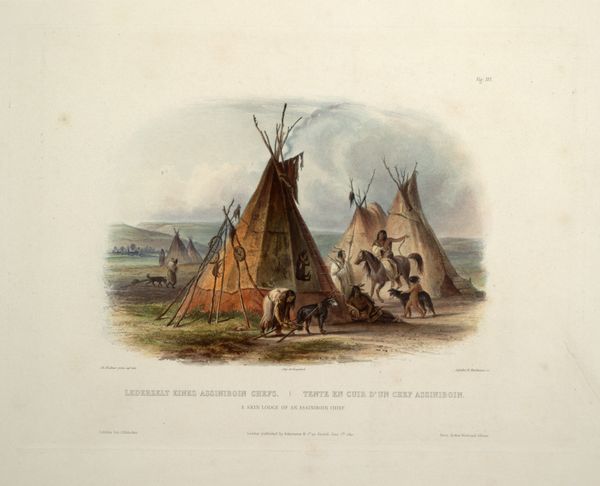
drawing, paper
#
drawing
#
landscape
#
paper
#
watercolor
Dimensions: 5 1/2 × 8 1/4 in. (14 × 21 cm) (image)9 5/8 × 12 13/16 in. (24.4 × 32.5 cm) (sheet)17 9/16 × 21 1/2 × 1 1/8 in. (44.6 × 54.6 × 2.9 cm) (outer frame)
Copyright: Public Domain
Seth Eastman made this watercolor, "Marriage Custom of the Indians," at an unknown date. He was a military officer and artist, and the image offers a glimpse into how Native American life was perceived in the 19th century. Consider the title itself, which frames a complex social ritual as a mere "custom." Eastman's position as a U.S. Army officer during a period of westward expansion and conflict with Native American tribes deeply influences the work. The painting depicts what Eastman likely observed—or was told about—regarding Indigenous marriage traditions. However, the very act of documenting and categorizing these traditions reflects the dominant culture’s attempts to understand, and perhaps control, Native populations. How might Eastman's military background shape his interpretation and representation of this event? The answer may lie in further research into the history of U.S.-Native American relations. The image, therefore, serves as a reminder of the complex social and institutional contexts that shape artistic production and reception.
Comments
minneapolisinstituteofart about 2 years ago
⋮
U.S. Army Captain Seth Eastman was a trained artist who served twice on the frontier at Minnesota’s Fort Snelling, from 1830 to 1832 and again from 1841 to 1848. His extensive firsthand, peaceful encounters with Native Americans gave him extraordinary opportunities to observe their customs and practices, which he documented in his art. Most of the 35 works on paper by Eastman in Mia's collection relate to an assignment to illustrate a massive survey of Native culture by Henry Rowe Schoolcraft, but several watercolors illustrate the writings of Eastman’s second wife, Mary Henderson Eastman. Often these were interpretations of Native stories she collected during her seven-year stay at Fort Snelling, but apparently the story depicted here, of a messenger carrying a bride to a waiting groom, is largely fictional. The image was reproduced in an 1852 publication called “The Iris,” along with Mary's story "The Dacotah Bride."
Join the conversation
Join millions of artists and users on Artera today and experience the ultimate creative platform.
